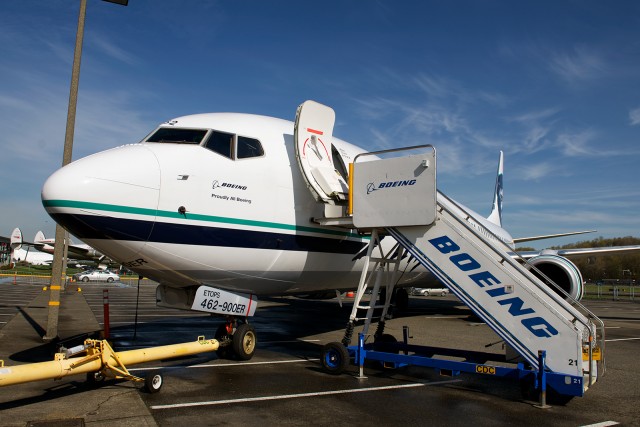
It’s not every day that you see any sort of 737 in the Museum of Flight parking lot – Photo: Bernie Leighton | AirlineReporter
Over the past few years, Alaska Airlines has been making gradual enhancements to its overall product. New seats from Recaro, in-seat power, Wi-Fi from Gogo, Starbucks coffee, and tablet-based in-flight entertainment (IFE). These improvements have all come together to create a product Alaska is calling Alaska Beyond. The most noticeable addition to their product is improving upon their dining options.
To complete the Alaska Beyond project (the last few aircraft will be reconfigured by the end of April), Alaska decided to have a party. Now, that’d be great on its own, but they made it even more impressive by taking a 737-990ER (N462AS, if you wondered) out of service for a day, and gave a two-hour demonstration of the product in flight. Who was to attend? Well, media, stakeholders in the Alaska Beyond product (including Tom Douglas, three-time James Beard award-winning chef), and Alaska’s 0.01% top-tier frequent flyers.
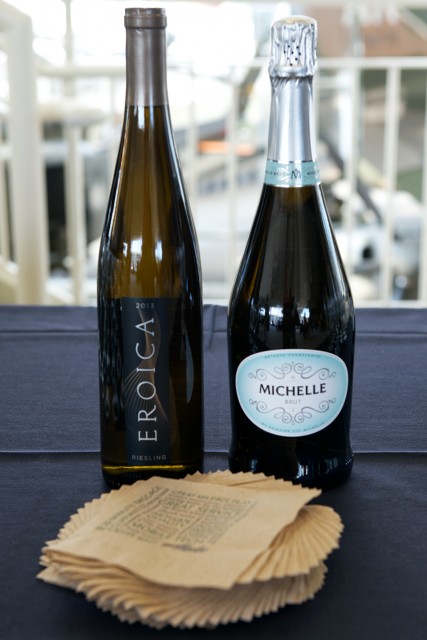
Seattle-area winery Chateau Ste. Michelle has formed a new partnership with Alaska Airlines – Photo: Bernie Leighton | AirlineReporter
Inside the Museum of Flight at Boeing Field, Alaska got the party started with wine from their newest partner, Chateau Ste. Michelle, along with Beecher’s cheese.
After enjoying the ground party, we were ready to head into the sky. We began to head back to the parking lot (yes, the parking lot) to embark on our flight.
Boarding was awesome. There’s something to be said about taking up more than 2/3s of a parking lot for a 737 if it means you can walk over the lines with reckless abandon and on to a plane. It didn’t hurt that it was a beautiful and sunny day — especially for being March in Seattle.
The Recaro seats were of the slimline variety, no surprises there – it’s 2015. The cabin was fresh and clean; it was obvious that this aircraft had been nearly hand-polished to show off for the guests and VIPs. It is rare to see an in-service aircraft that clean – seriously. There weren’t even smudges on the windows! Shows you what kind of effort Alaska is willing to put in to prove their commitment to highlighting their new product (one might even say they went above and beyond).
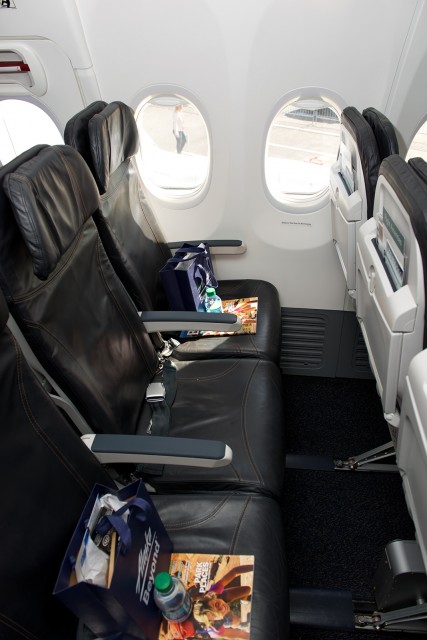
A better look at the hard product that makes up Alaska Beyond – Photo: Bernie Leighton| AirlineReporter
Arriving at the assigned seat, one couldn’t help by notice that there were some prizes — and who doesn’t love prizes? For those curious, not only did they include the lovely Alaska Beyond bag, there were also some headphones, Tom Douglas’ salmon spice rub, some chocolate, and small bottles of alcohol. A very nice touch.
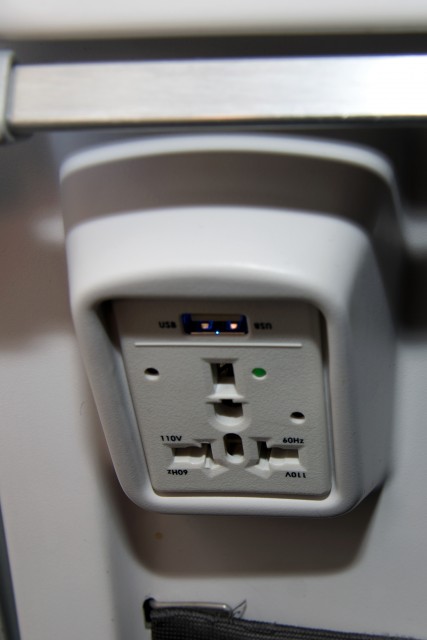
All Alaska aircraft will boast standard, universal, power outlets as well as 5V USB outlets by the end of April – Photo: Bernie Leighton | AirlineReporter
Two things also jumped out right away. First was that the in-seat power features not only a 5V USB outlet, but also a 110v universal outlet. Second, most passengers could see their car. Nothing makes you feel like you are some sort of success when you can see your car less than 100 feet from the aircraft.
Even though this was an exciting VIP flight, there were quite a few people that were on the flight — about 150 or so. In the end, guests didn’t end up with their own row, but getting the window seat was a nice bonus (also the fact that every middle seat was open).
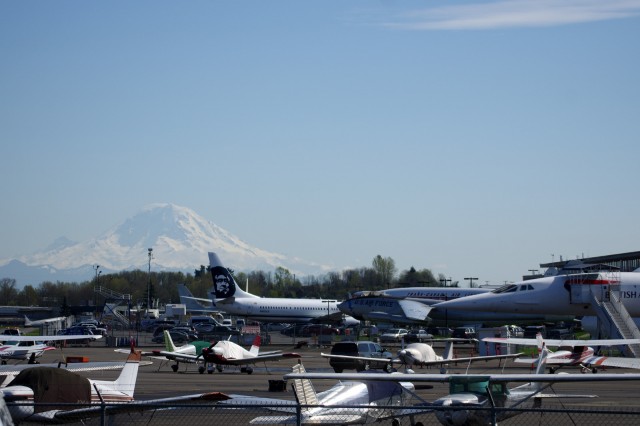
N642AS needed great skill and care to be pushed back on an active taxiway – Photo: Malcolm Muir | AirlineReporter
Once everyone had settled in, it was time to begin the elaborate push-back sequence.
It took, per the captain, “about twenty minutes.” Sadly, it was difficult, from inside the plane, to see the great detail and tiny adjustments necessary to push the 737 back. Surely it required a lot of annoying turns and micromovements, but from inside the cabin it was nothing out of the ordinary in any way other than time that it took and of course seeing a Concorde outside the window.
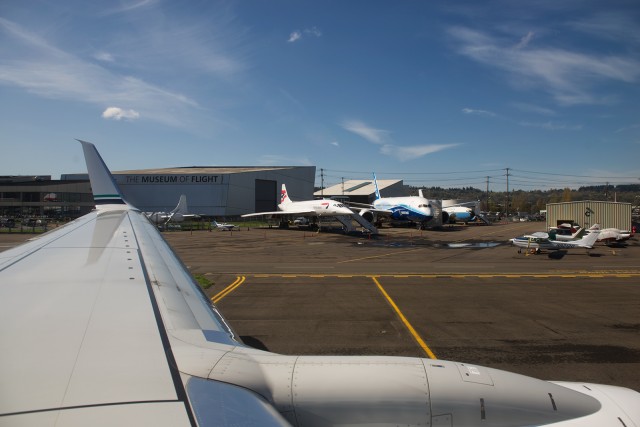
Taxiing past the Museum of Flight is not something most people get to do – Photo: Bernie Leighton | AirlineReporter
It didn’t take long for us to taxi down, take off and Alaska flight 9668 was airborne. It took a ridiculously short amount of time to lift off, and its climb to the blistering height of 12,000 feet took no more than three minutes. It is always appreciated when an airline files for such a low altitude flight. The views are more amazing, but so is the extra fuel bill.
Once we reached 10,000 feet, things started to get mildly frustrating. Think, for a moment, how many people are using WiFi on an average 737-900ER flight? Statistics show probably less than 70. That’s great — the Gogo system can handle that. Now, imagine that the majority of 150 people all pinging the Gogo system at once to see if the Wi-Fi is live and enter their promotional code — things don’t go so smoothly. Finally, the internet worked enough to get a few tweets out, but it wasn’t easy.
In what seems like a great marketing partnership between the Seattle International Film Festival and Alaska, there was to be a first-run screening of the indie comedy “Lucky You.” The director was on board, even, and gave a speech. Great, except, simple physics dictate that you can’t have everyone watching the movie, at different points into it, while other customers are using the same router to connect to the ground. There’s just not enough bandwidth in the 802.11a standard. Heck, 54mbps is barely enough to watch Netflix in 4k.
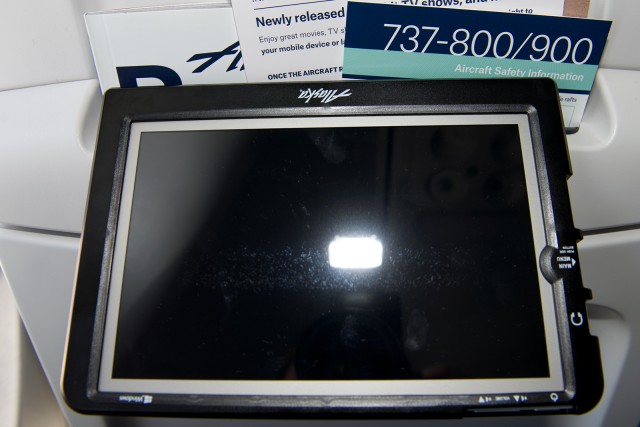
The Skycast tablet covers allow them to hang from the seat pockets – Photo: Bernie Leighton | AirlineReporter
After stuttering through the movie, and resigning, it was time for me to check out the Toshiba-made Windows tablet, with custom nanosilver antibacterial cases made by Skycast. Alaska has around 7,000 of these that are rented out to customers, with thousands more on order.
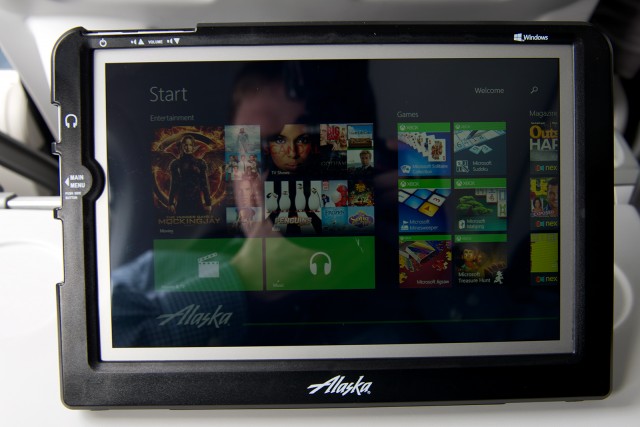
As part of Alaska Beyond, customers can now rent a Toshiba tablet to provide IFE – Photo: Bernie Leighton| AirlineReporter
They call it a product leapfrog, and in a way, the tablets are – because they have local content. Rather than carrying heavy IFE units in the seat-backs, airlines can rent a tablet to those who want it. They get all the content of a seat-back unit for a lot less weight. That said, the before-mentioned bandwidth issues do expose the weaknesses of streaming IFE.
The IFE was entertaining enough, but received a welcomed interruption when Tom Douglas was walking down the aisle, handing out coleslaw — good coleslaw! It was time to check out the food.
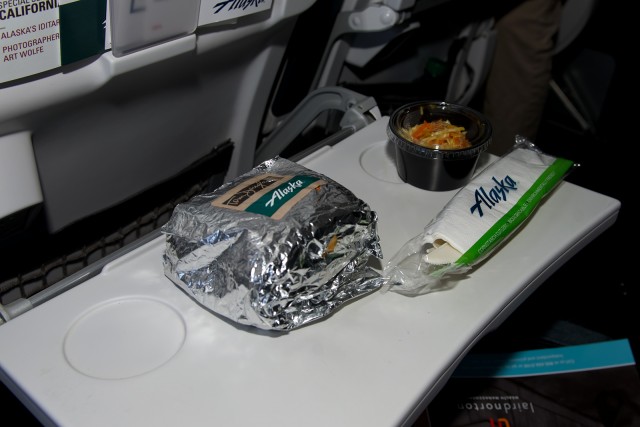
Tom Douglas personally served passengers these BBQ chicken sandwiches. Photo – Bernie Leighton | AirlineReporter
The chicken sandwich was also delicious. No, seriously- it was.
During the flight, there were many people walking around, including TV cameras and reporters walking back and forth trying to add motion perspective to their segments. Not wanting to get thwacked by an expensive camera , or in trouble with the cabin crew, it was best to remain seated.
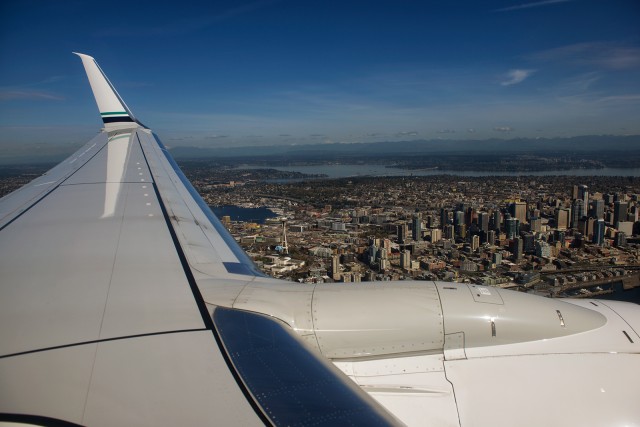
The Seattle skyline marks the approach to runway 13 at KBFI – Photo: Bernie Leighton | AirlineReporter
It really wasn’t a big deal staying in the seat, since there were some pretty amazing views outside the window. It’s fantastic to see the Seattle skyline and the Space Needle off the wing before landing — no complaints here.
Overall, though, the flight left a bit of confusion. Other than the updated Tom Douglas menu, the branding, and the connections to the film festival, Alaska has already had many of these things for a while.
It seems that the goal was to remind passengers, who might not fly often, what the total Alaska Airlines experience will look like. It is also a way to let them show passengers how they might stand out from their competition (no question Delta in the Seattle area).

Our special flight path up and down the Washington coast – Image: FlightAware.com
It is one thing to test an airline’s product on the ground or even on a regularly scheduled flight, but it is another to have a special media/VIP flight that departs from a parking lot. All the extra special aspects aside, it seems that Alaska has created a competitive grouping of passenger products.
Before this flight it was a bit confusing on what exactly Alaska Beyond was. We had seen the postings via social media and even billboards that have gone up around the Seattle area, but for many, they left more questions than they did answers. What is Alaska Beyond?
After the media event, it became more clear, but will passengers understand the “Beyond” marketing campaign? Will it result in new passengers coming from competitors to Alaska? Will the combined product keep Alaska passengers on Alaska planes? Only time will tell.
Either way, we are excited to try out the combined “Beyond” product out in the real world, on a normal schedule flight. Stay tuned!
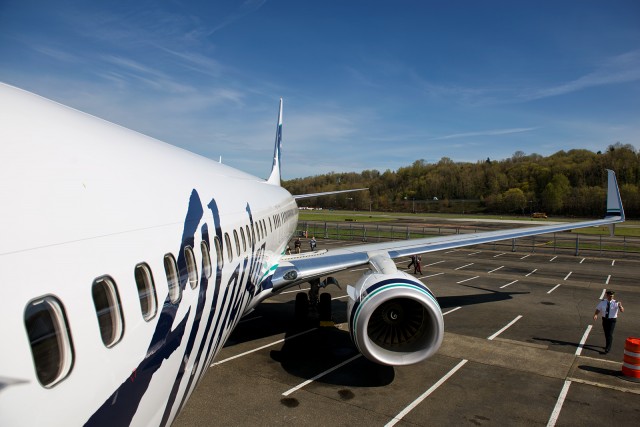
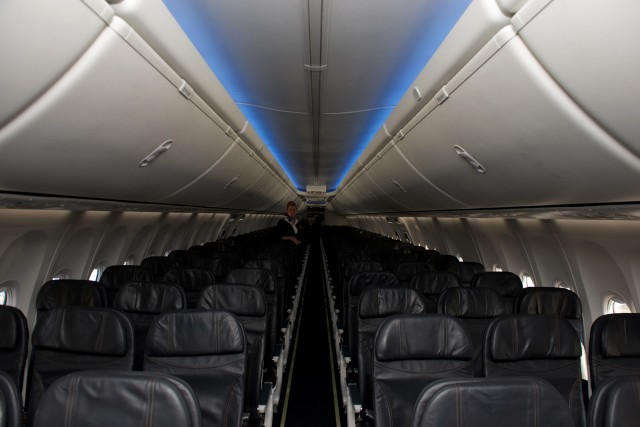
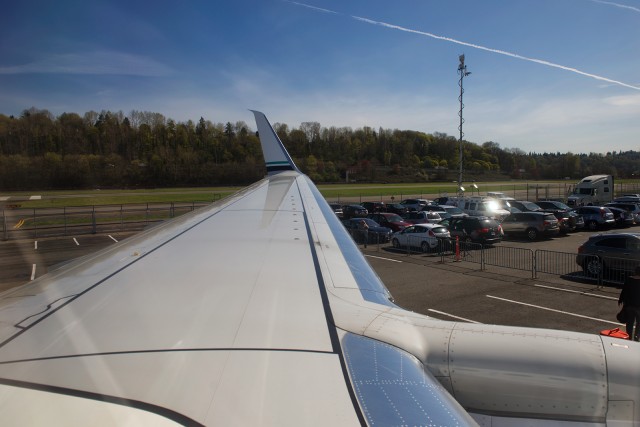
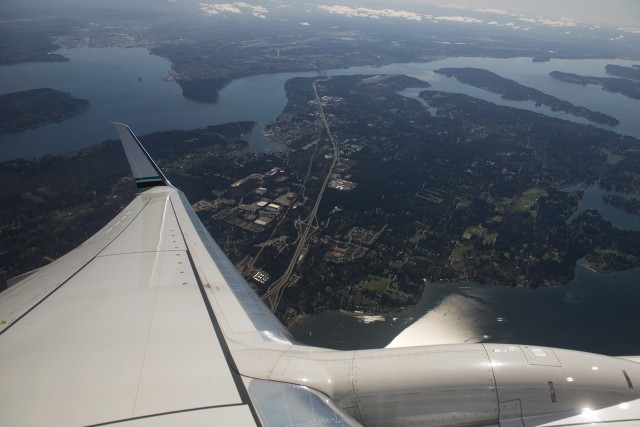
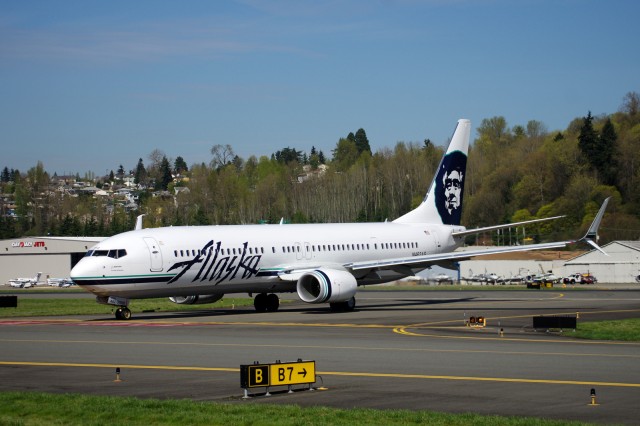
Nice review! Thanks! I want to try Alaska Beyond now!
This is a good story, but talking about the decision making that went into the Alaska Beyond experience would have been better. Food choices, beverage choices, F/A input, etc.
Good mini review, but as Rob said above that would have a made it better.
Forgot to mention, reason being that is what the “paying” passenger will be experiencing.
I certainly love some of Alaska’s latest changes (most especially the onboard beverage selection), but I really think we should call a spade a spade here when it comes to the seats. I flew Alaska to AGF15, and experienced the new slimlines. They are some of the most uncomfortable seats I’ve experienced in recent memory. I literally felt pain during and after the flight, and vowed never to fly a high-capacity 737 on transcon again. Alaska has bowed down a little too far to Wall Street on this one and I believe passengers will notice. And no amount of delicious homegrown boozy beverages will change that. #PaxEx
I have to take the exact opposite to Mary’s experience. The new Recaro seats are the most comfortable seats I’ve ever flown in coach. The new 737 product is the first aircraft I’ve flown cross county and not experienced the grinding lower back ache of the older seats. For me the back lunar support is perfect and makes me look for more Alaska flights. Living in Anchorage. It makes my travel better and More comfortable.
Make that Lumbar support, but I do support the moon as well!!
I love flying Alaska out of DFW–my airline of choice, especially to the Northwest. As nice as a junket from a parking lot with goodies on a clean plane is, however, as a consumer I’d get more value from a review on an actual revenue flight. But, good on ya for pointing out the weakness with the wifi.
This is where the resume cover letter example comes in: you still need your standard heading, body,
and ending, all in a brief billet designed to show off
your personality. Remember goal setting is pointless,
it is utilizing goal setting for 2 purposes, the what, and
where. This means that it can be used in any number
of productions; common uses for stock footage are documentaries,
television programmes, news items, sports reviews, independent
films, commercials, and movies.
I fly Alaska SEA -> DCA, SEA -> DFW, and SEA -> PHX regularly. I really love the Recaro seats. The slimline doesn’t bother me and I like having extra space, instead of the seat cushions taking up the precious room!
I have never been one to care much about IFE, preferring the iPod/Bose QC-25/Kindle Fire HDX combo, all offline, but I do use Gogo inflight fairly often, and other than their ridiculous prices, I’m mostly satisfied. Of course, that’s how it works… when bandwidth complaints go up, so do the prices, and then the user count on a segment goes down, and those who pay for the service are more pleased with the bandwidth. It is really sad how much I enjoy Facebooking and tweeting at 37,000 ft!
The Alaska Beyond food is mostly delicious and the price is totally fair… $6 for a hot entree. I’ve been bumped to first class a few times because I’m MVP and the food there is even better.
Also, in many thousands of miles flying, Alaska has yet to lose a bag for me, and they’ve missed their 20-minute baggage claim guarantee exactly once, at DCA, and hey were super-nice about handing out vouchers for the extra two minutes we waited. They also gave us snack coupons, and I was able to use that in the airport before my flight home.
Planes are alway pretty clean (MUCH better than Delta, who honestly does not seem to care at all about that issue) and FAs are friendly and experienced.
On the whole, I have plenty of reasons to fly Alaska and few reasons not to, so I stay loyal whenever possible.
Hey Julia,
I know what you mean about the 37,000 WiFi. I feel every Tweet, ever FB post, every story written at 37,000 ft is just a little sweeter :).
Bonus points if you wrote this comment while in flight!
David | AirlineReporter
You may additionally find it useful to learn as they
are an entire education information to binary options.
I have to concur with Mary about the bad seat support. I’ve flown cross-country 3 times with the new interior and transpacific once with the new product, and have consistently had the painful experience.
The flights: KPDX-KEWR (B738). KEWR-KPDX (B739). PHNL-KSEA (B739). KSEA-KBWI (B739)